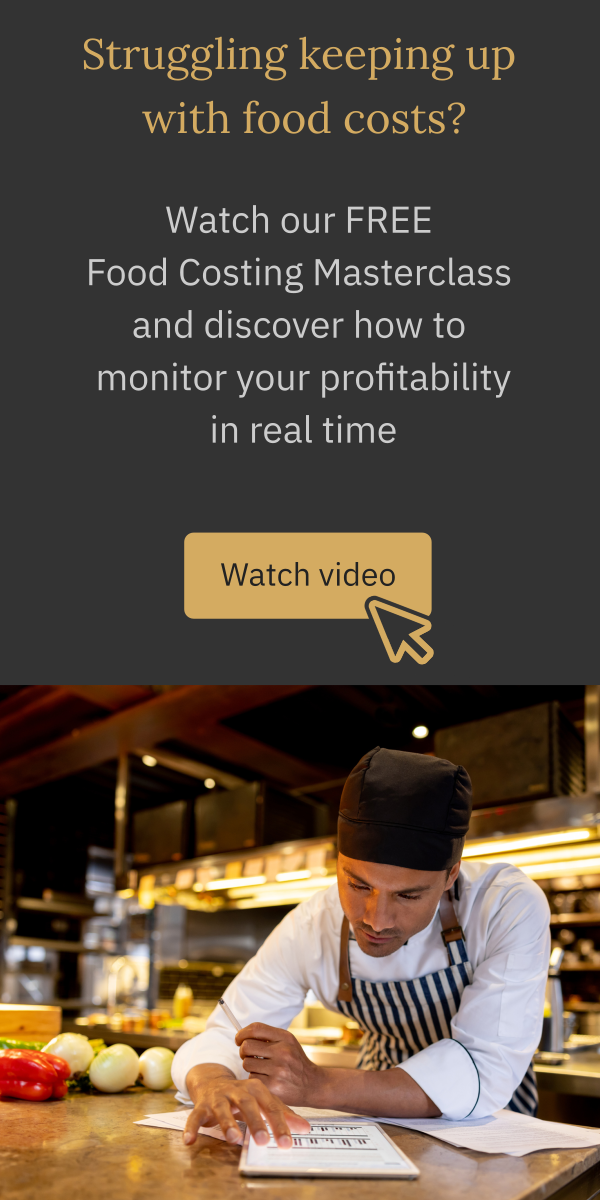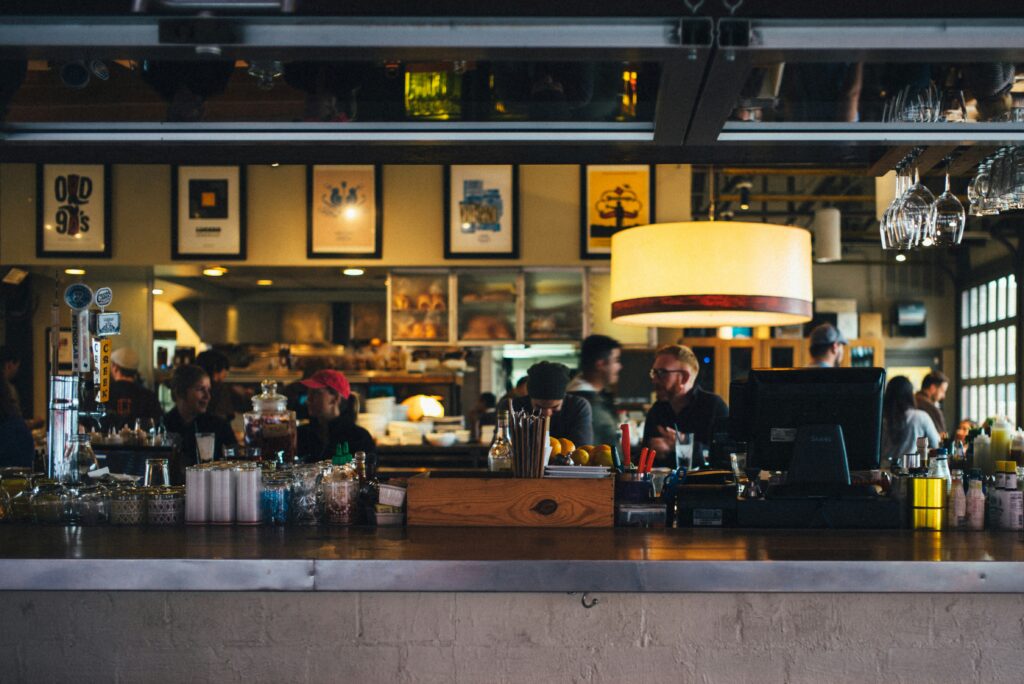Stay in the loop
Table of Contents
- 1 Why is food cost control so important?
- 2 How to calculate food cost
- 3 Why is your food cost so high?
- 4 How do you price your menu?
- 5 3 best practices to control your food costs
- 6 What is the best inventory app to manage food cost?
- 6.1 Save up to 80% on time spent managing your inventory
- 6.2 Go paperless and eliminate human errors when managing your restaurant inventory
- 6.3 Find opportunities with detailed variance reports
- 6.4 Reduce the time spend on restaurant supply management and focus on creating an outstanding customer experience
Running a successful restaurant business is not an easy task. In addition to ensuring your kitchen is making delicious food and your front of house employees are creating an enjoyable customer experience, you also need to keep track of your finances and the overall cost of running your restaurant or bar.
At the end of the day, a restaurant is just like any other business and if you are not generating profit, your business is going to fail. Whilst there are some expenses that are fixed and you don’t have much control over, you have control over your variable costs.
For example, you can analyze your food cost to better manage inventory and make menu changes if necessary. A tighter control of your inventory will allow you to reduce food waste and increase your profit margins.
Why is food cost control so important?
Food cost control is important in restaurant management as it represents a significant portion of your expenses. If you are able to control the cost of your food, you will be able to increase your profit margins. Your menu item pricing does not have to change but your inventory cost will decrease.
Moreover, reducing food cost also helps reduce waste which is a big problem in the restaurant industry. In Canada, 58% of all food produced is wasted, which represents 49 billion $ lost per year (source). Not only is this bad for the environment but it also means that you are wasting money.
Get personalized recommendations on bar and restaurant inventory management.
How to calculate food cost
If you want to determine what percentage of your restaurant’s revenue is related to food costs, you should use the formula for total food cost percentage:
Total Food Cost Percentage = (Total Cost of Goods Sold / Total Revenue) x 100
Here are the steps to follow to implement this formula:
- Calculate your restaurant’s Cost of Goods Sold (CoGS)
CoGS represents how much the food and beverage costs over a period of time. You can determine this with the following formula:
CoGS = (Beginning Food and Beverage Inventory Value + Inventory Purchase Value) – Ending Inventory Value
- Calculate your total revenue
Check your POS to see how much revenue your restaurant earned during the chosen period of time.
- Divide CoGS by your total revenue and multiply your answer by 100% to determine your total food cost percentage.
You can apply this food cost formula to the time period you prefer (a week, month, year, etc.).Your restaurant’s food cost should ideally be between 28 and 35 %. This will allow you to make money on what you are selling. However, other things are factored into the ideal food cost percentage, such as rent, employee wages and other bills.
When you consistently calculate food costs, you can see what you can afford to charge customers for the food you are making. It also ensures all overhead costs are accounted for and that you do not fall short in any area.
Why is your food cost so high?
There are a few different causes of high food cost. From portion sizes, to overbuying, you need to do a bit of menu engineering to ensure you are buying exactly as much as you need, aren’t wasting any food and are keeping customers happy.
Portion sizes are something that restaurants need to get right in order to keep food costs down. If you are making huge portions that people are not finishing, you are wasting food and money. Overbuying is another key reason why food costs are so high. To avoid this, restaurants should invest in inventory management software.
Poor inventory and restaurant management is what causes food costs to be so high. If you are running your restaurant in an inefficient manner, you will fail to maximize your profit margins and will lose money.
Getting your menu pricing right is key to generating profits. In order to calculate exactly how much you should be charging for each menu item, you first need to calculate the amount it costs you to make the food and divide that number by your ideal food cost percentage.
Doing this will tell you how much you should be charging customers for each of the menu items to allow yourself to make a profit large enough to sustain your business.
3 best practices to control your food costs
The main aim in the restaurant business is to make as much money as possible, which is best done through controlling food costs. However, this part of the industry is one that many people overlook and don’t take seriously. In order to help you reduce food costs in your restaurant, here are food cost saving ideas.
Know your prices
Many restaurants get all of their inventory from a single supplier and make the mistake of not shopping elsewhere. Staying loyal to your supplier might mean you are paying more for your produce and inventory than you need to be.
One of the best ways to reduce your food costs is to shop around for suppliers to negotiate the best rates and prices. It is also recommended that you do this frequently. It can be easy to stick with a single supplier for convenience but continuously assessing alternate vendor prices can help you cut down your food prices over the course of the year.
Regular inventory checks
Inventory management needs to be carried out thoroughly in order to keep food costs down. Conducting regular inventory checks will allow you to easily determine what is selling and what is not. This will allow you to minimize waste and maximize profit.
Restaurant Inventory Tips to Run your Business Successfully
Join a purchasing group
A food purchasing group is when multiple restaurants or businesses in the hospitality industry join together to buy food from suppliers. It is a great way to get discounts on food as it gives you more negotiating power when it comes to supply sales.
What is the best inventory app to manage food cost?
RapidStock is one of the best inventory apps on the market thanks to its seamless integrated POS system. It allows you to order from your suppliers directly from the app, control your costs and optimize your stock levels. Overall, it is a great system that makes inventory management far less stressful, time consuming and costly. RapidStock allows you to:
-
Save up to 80% on time spent managing your inventory
-
Go paperless and eliminate human errors when managing your restaurant inventory
-
Find opportunities with detailed variance reports
-
Reduce the time spend on restaurant supply management and focus on creating an outstanding customer experience
About the author
Fabrice Tremblay
Fabrice founded RapidStock in 2017 after working as a production planner for almost two decades. Briefly a bar owner and tech lover, he was inspired by the challenge of helping passionate entrepreneurs in the bars and restaurants industry.
When not working on RapidStock, Fabrice enjoys cooking and spending time outdoors with friends and family.
More tips and tricks



